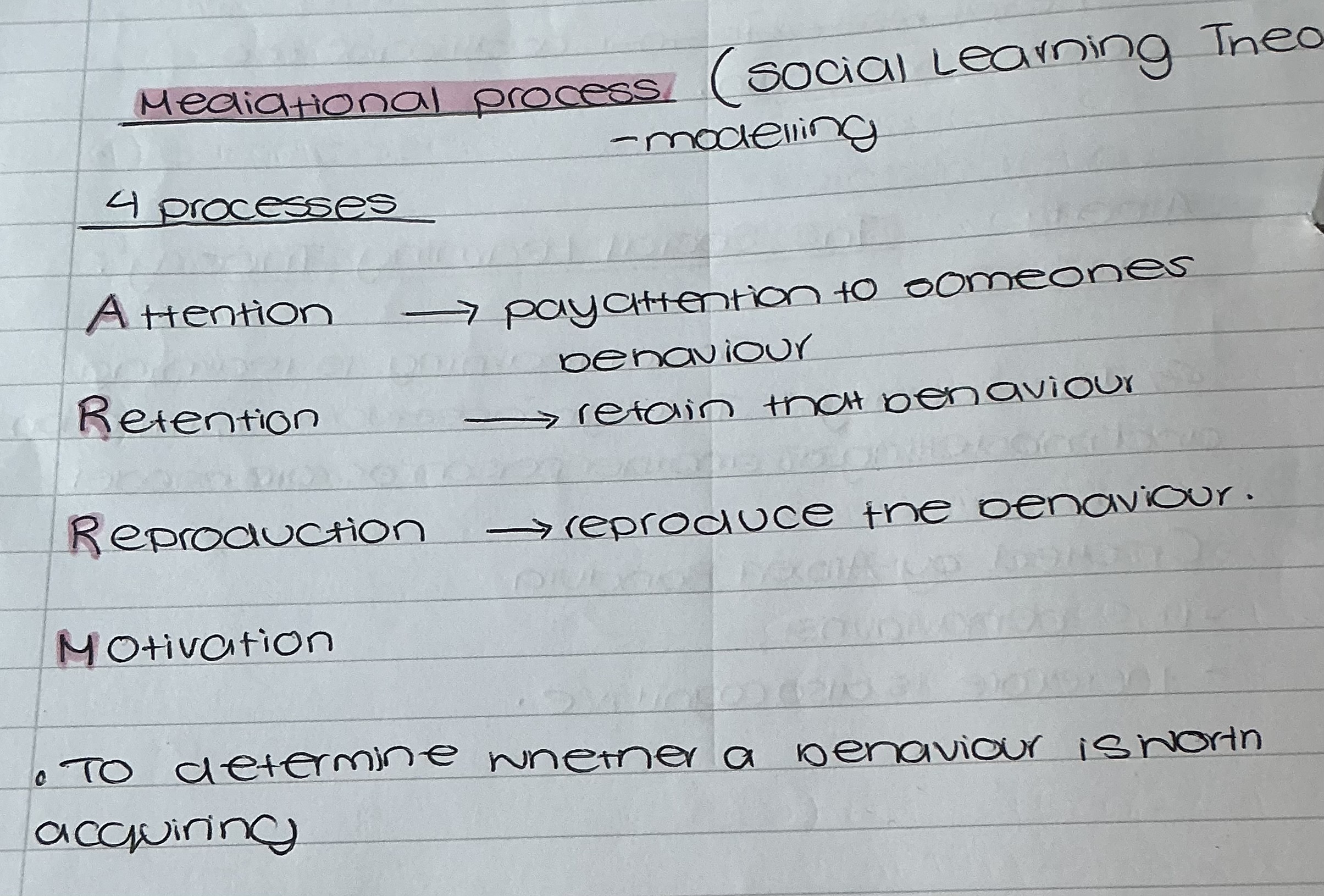Learning Approaches
1/7
There's no tags or description
Looks like no tags are added yet.
Name | Mastery | Learn | Test | Matching | Spaced |
|---|
No study sessions yet.
8 Terms
What is The social learning theory?
Created by Albert bandura
Learning through observation imitation and modelling another person (role model)
His benaviourist therefore cognitive
What is identification (modelling)
. People, especially children are more likely to imitate someone they identify with, these are called role models. This process is modelling.
Identification acronym

Mediational process (modelling)

Research to support social learning theory (bandura)
Experiment on children
Bobo doll (1961)
36 boys, 36 girls tested
Procedure → 2 groups, one known with an aggressive role model in a film, other no film
Results → there are no gender differences in aggressive benaviour. AIl who were in a film group played with a toy gun.
Appıying social learning theory to aggression.
A later experiment (bandura and waiter’s 1963)
Snowed children consequences of the adults behaviour
In the findings, boys were more influenced by rewards and girls were more influenced by punishment,
STRENGTH AO3 of bandura(1961) and bandura and waiters (1963)
Good sample size
Video evidence
Generalisable to both boys and girls
Demonstrates power of role models
WEAKNESS AO3 of bandura(1961) and bandura and waiters (1963)
Video evidence is a potential breech in confidentiality even though parents gave consent
Ethics - they watched an aggressive role model which could cause aggressive behaviour in the long term
Cant be represented- all white Americans aswell as the researchers (historical context/ segregation)
Low temporal validity- has the data stood the test of time?